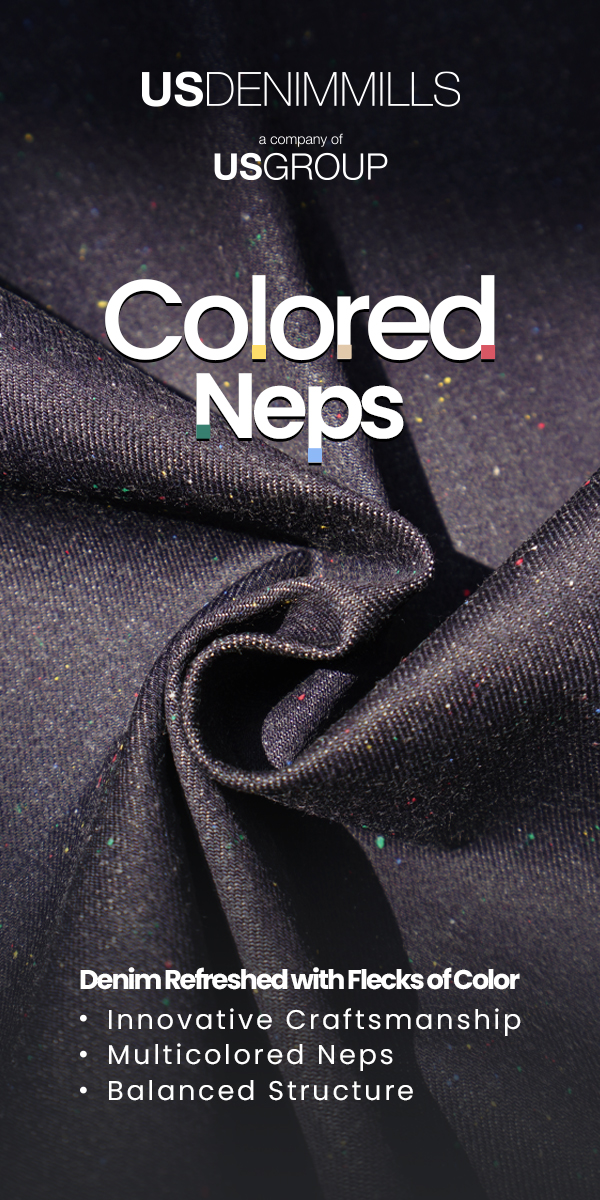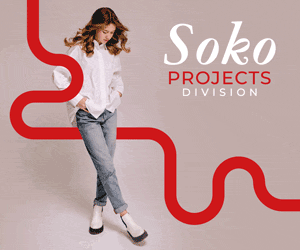Fittingly inclusive, ahead of the curve

A leather bag designer decided to create a perfect pair of jeans. Her first step? Getting rid of standard industry measurements.
There’s a lot of denim-related trauma out there,” says Molly Spittal, designer and co-founder of Vancouver-based Decade Studio. “When customers come to my fitting room in our shop, it’s a kind of personal journey because I make jeans in a different way.”
Decade Studio describes its jeans as “shape-inclusive denim for every body”. The brand’s line of jeans is based on what it calls ‘ratio fit’ — referring to the proportions, or ratios, found in women’s measurements. Your ratio, according to Decade, is the difference in inches between waist and hips. Women for whom this ratio is higher or lower than industry standards have long had to settle for ill-fitting jeans, typically sizing up or down to accommodate one body part while creating gaps or discomfort in another.
In a world where jeans are among the most ubiquitous items of clothing — and having a ‘favourite’ pair of jeans is a social norm — struggling to find even a single pair that fits in a flattering or comfortable way can be painful and alienating.
“Shopping for jeans is hard for folks who fall outside of the industry standard fit model,” says Ms Spittal. “Our patterns are contoured to fit curves; it’s not the industry standard that you expect. It can be really emotional, to be honest, because people really care and so do I.”
Discovering a need
Ms Spittal did not know what an important problem she was setting out to solve when she designed her first pair of jeans. At the time, it was more of a fun project than a mission. In 2014, she was designing for her brand The Stowe, the leather bag company she and her partner Matt Atkinstall were running. Close friends and fellow entrepreneurs Morgan Ellis and Ezra Kish challenged Ms Spittal to create ‘the perfect’ pair of jeans and she began denim fieldwork.
“In the early days, I asked anyone who would talk to me about common issues of fit,” she says. Having worked in design, she knew her own measurements were not industry standard — in fact, she had never found jeans that fitted her own body properly. “I started asking every woman or female-identifying person I came in contact with if they struggled too. It wasn’t unanimous, but there was a high percentage of folks who had the same issues.”
Many women find shopping for jeans to be as traumatic as shopping for swimwear, she learned. “Denim is such a personal item of clothing and it’s meant to break in according to your body and your needs, but the pattern must be right from the first try for that to happen,” she says. Too many people found that right pattern to be utterly elusive.
She began to design what would become The Bonnie, using her own ratio for primary guidance. It was “nerve wracking to design a pair of jeans that didn’t follow the industry standard measurements or ratio, because that creates a niche product,” she says, “and we weren’t sure if that was the direction we wanted to head in.” But when the first prototype for the Bonnie came in, they fitted her perfectly — a lifetime first, for Ms Spittal — and the four friends suspected they were onto something special.
Bringing new proportions to market
Decade Studio launched publicly in 2019 with the Bonnie and the Alex, and consumers were thrilled by these jeans designed around the ratios Ms Spittal had uncovered. From the start, the Bonnie was the most popular.
“It’s an incredibly common ratio — having eleven to thirteen inches between your waist and your hip at any size,” she says. “It’s the first go-to, where customers say, ‘Oh wow, these are different. They really feel different. Why don’t they gap at the waist? They’re also really high waisted.’ That feels good for a lot of people, they feel held in.”
A family-run production team in Portugal manufactures the jeans. Sometimes, Ms Spittal says, “they have a hard time understanding why we do what we do. There’s a lot of back and forth between us and the pattern team. When they say, ‘we can't make this happen,’ what they’re actually saying is, ‘this is risky for us, it’s not conventional.’”
Ms Spittal acknowledges an element of risk, but “we won’t hold them responsible for something we’ve requested. We’ve made oopsies here and there, and some designs are extreme, but we’re in daily contact and we love our factory. Not only do they make an incredibly high-end product, they also make space for us to explain our vision.”
It was not long before Decade announced it was going to offer extended sizes. “It really took off,” says Ms Spittal. “Thousands of people began lending us their data. We have thousands of lines of data now, which we translate into ratios.”
But bodies being bodies, ratio-fit is more akin to a philosophy than any fixed proportion. “In higher sizes, the ratio has to change as the weight distribution changes,” she says. The waist area on one model will increase at a different rate than the butt area and might increase on another. The Decade team conducted five rounds of fit testing before bringing extended sizes to market. “We made so many adjustments,” she says. “We had to make sure the ankle wouldn’t increase at the same rate as the hip because, you know, your butt doesn’t grow at the same rate as your ankle.”
The process of researching the needs of consumers in the extended-sizes space proved to be what Ms Spittal describes as “the highlight of my career”. Through her consultations, she came to recognise she had to think both as a designer and as a person. “Working with our plus-size community here, with all the fittings and having them come with me along the journey, has been amazing.”
This ethos of working closely with customers has been integral to the success of Decade Studio. When the pandemic struck a year after the brand launched online, Ms Spittal found herself isolated from any feedback. “I couldn’t see my customers try on my product, and the best way to find the right size is just to come try them on.”
Last summer the brand opened its first bricks-and-mortar location — a part-time shop that encourages in-person consultations. “It’s kind of tucked away,” she says. “But if you know what to Google, you’re going to have the best shopping experience ever.”
With the effects of covid-19 lightening, Ms Spittal is once again able to solicit direct feedback from customers. Crucially, having this in-person space also informs her designs moving forward. If a customer cannot find the right fit, she can pull out a prototype from the back and let them try it on. This happened repeatedly with a prototype that would become the Andy. “The Andy prototype worked for so many people that I felt I had proof of concept before we even launched it. And lo and behold, it’s our bestseller of the season.”
Relaxing without stretching
Ms Spittal believes the Andy has been popular for two reasons: the rise is high, but not as high as the Bonnie, and it is “a little slouchy, a little loose”. In the post-covid world, “people want to feel comfortable when they’re out in the world again,” she says. “You can look polished, but feel like you’re wearing sweatpants.”
Having this more relaxed fit offers welcome wiggle room within a label that made a deliberate decision not to weave stretch into its jeans. Decade jeans are 100% cotton and contain no elastane. Yes, this decision complicates her design options, Ms Spittal says, but she refers to elastane as planned obsolescence (as it impacts a denim’s recyclability) and links the synthetic fibre with fast-fashion and over-consumption in the apparel industry, which counters what the brand stands for. “I want longevity in the closet,” she says, which translates into “a timeless silhouette” made with “beautiful, natural materials.”
Using elastane, Ms Spittal concedes, makes it possible to “design one pattern that fits a variety of bodies and weight distributions” — a luxury she does not allow herself. This is another reason why the Andy has been so successful. Ironically, its looser fit relies less on the brand’s founding ratio-fit.
Initially, Ms Spittal says, ratio-fit was a key differentiating feature for the company. But it also led to some confusion. “Our customer was finding it a bit rigid — the measuring and the importance of finding your ratio. It was something that they had never done before and it was adding to the online shopping journey.”
As a result, Decade is designing more pieces that do not require such specificity for a good fit. “The Andy Jeans are a good example of the new area we’re moving into. They have a relaxed loose fit, they don’t need a break-in period, and neither do they need to conform to our measurement system.”
Creating space in a crowded market
This move to mixing human-friendly sizes with environmentally-friendly material resonates powerfully with Decade’s consumers, but, as Ms Spittal points out, it is difficult for a small business to penetrate the denim market.
“Our customer is incredibly loyal,” she says, describing a base that covers not only Canada, but the US, Australia and even New Zealand. “Once they find us, they're like, ‘Holy cow, here it is. This is it. I’ve been waiting for this my whole life.’”
As a “bootstrapped business” with limited manpower (Ms Spittal and Mr Atkinstall run all day-to-day operations), customer acquisition in a saturated market is challenging. “Everybody loves blue jeans. A lot of designers include it as part of their collection, as a subcategory, while it's all we do. As an independent designer, it’s been tough to dig out a little corner for ourselves. But we’re getting there.”
Getting there involves ongoing work on new designs, continuing to nurture Decade’s online community, and increasing focus on developing wholesale. Consumers can expect to see new silhouettes and fabrics for spring and winter, and the brand will attend trade shows in New York and Los Angeles. “I'm really looking forward to having some face time with buyers and shop owners once again,” she says.
When Molly Spittal moved from leather bags to denim some five years ago, she pivoted from “focusing on form and beauty and sellability” to “a space where every curve and every inch is highly considered,” she says. “To be clear, it doesn't have to be highly considered, but I do. That’s what I hear makes my jeans so different.”
Molly Spittal, designer and co-founder of Decade Studio
All Photos: Decade Studio













